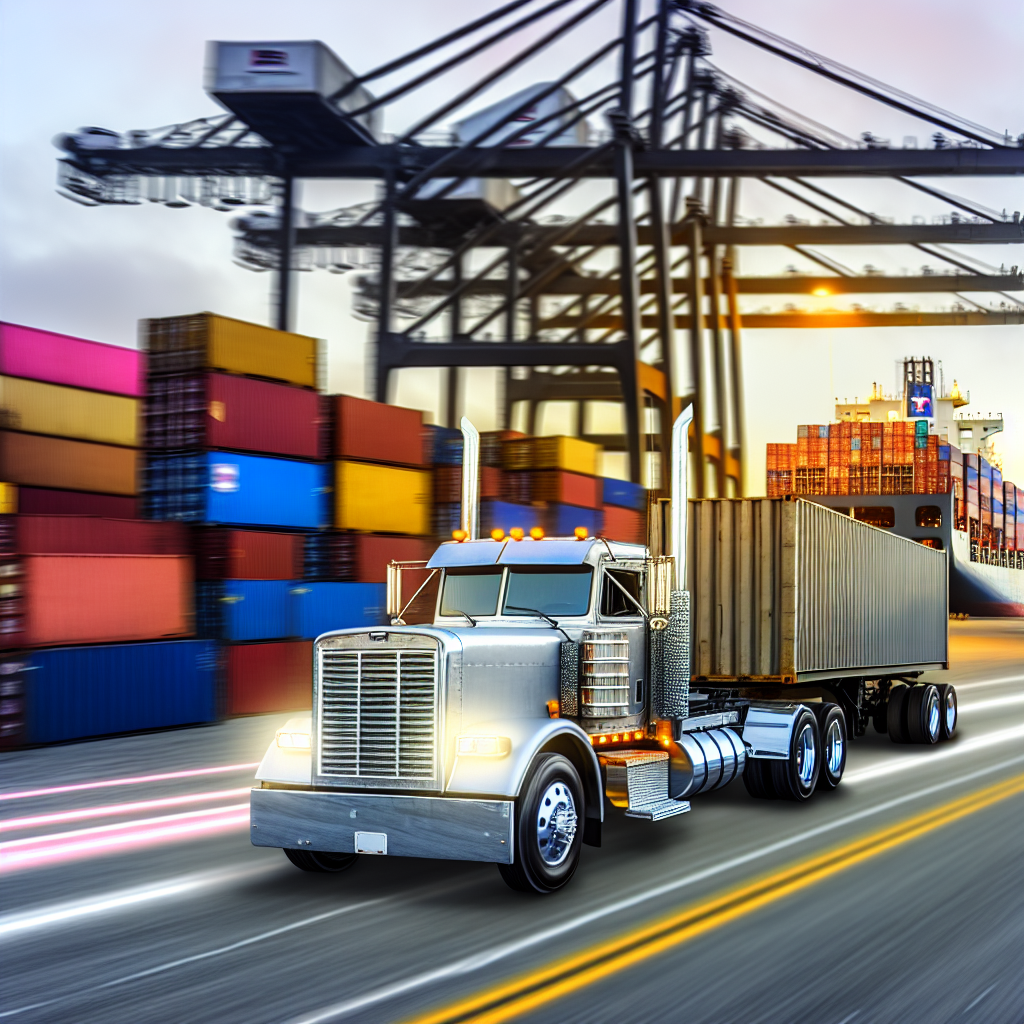Global container flows are setting fresh marks even as U.S.-bound demand cools — and now a new round of U.S.–China port fees threatens to shuffle service patterns again. For trucking fleets and intermodal shippers, that mix of record global volume and policy shock means more uneven vessel arrivals, shifting port routings and a different mix of freight on the street.
Fresh data point to the scale of the surge: worldwide container liftings hit a monthly all‑time high in August at 16.61 million TEUs, edging past the previous peak set earlier this year, according to figures cited by Container Trade Statistics. That record came even with a softer North American contribution, underscoring how strength elsewhere is offsetting U.S. softness.
The policy backdrop turned sharply this week. On October 14, Washington and Beijing both activated reciprocal port fees targeting each other’s vessels or ownership links, opening a new front in the trade conflict. Analysts warn the charges — applied at the first port of entry and set to ratchet up over time — will raise some shipping costs and could prompt carriers to rework rotations to limit exposure.
Early market reactions highlight the risk of knock‑on effects. Commentary out Wednesday noted some major operators are already avoiding direct U.S.–China routes, a signal that networks may pivot toward indirect routings and transshipment — the kind of changes that can bunch berth windows and scramble inland rail schedules.
While the new fees target all vessel classes, not just container ships, the cost shock is already visible elsewhere at sea: supertanker (VLCC) rates jumped this week as the fee regime and sanctions forced diversions and reduced effective capacity. Container supply chains don’t move crude, but they do share port infrastructure, pilots and tug availability at key hubs — meaning higher congestion risk when multiple sectors are disrupted at once.
Beyond Asia–U.S. trade, other regions are still printing records, which will influence what shows up in North American yards. Brazil’s Paranaguá terminal set its third monthly throughput record of 2025 in September and is leaning heavily on reefers for poultry and beef — a signal of strong south‑north protein flows that translate into steady refrigerated drayage and longhaul demand once those boxes land stateside.
Europe remains a swing factor for U.S. importers using transshipment or sourcing from the EU. A Dutch court’s temporary back‑to‑work order eased a Rotterdam lashing strike on October 14, but the episode added to vessel queues and schedule variability across the North Sea range. Expect residual delays to ripple into late‑October arrival patterns on the U.S. East Coast, with bunching that can strain chassis pools and terminal drayage for several days after big ships work.
What it means for U.S. trucking:
– Imports won’t collapse, but they’re getting lumpier. Record‑level global liftings plus changing carrier networks point to “feast or famine” gate flows. Plan for same‑day flex: add surge capacity on yard hostlers and pre‑stage drivers when multi‑string arrivals compress into 24–48 hour windows.
– Port mix could tilt again. If more carriers steer non‑Chinese‑built tonnage toward U.S. calls to limit fees, watch for incremental share shifting back to the West Coast on some strings. That would lift Southern California dray and cross‑dock activity and pull intermodal boxes onto rail corridors like the Southern Transcon — with corresponding step‑ups in final‑mile truckload demand a few days later inland.
– More reefers, different seasonality. South American protein strength means reefer capacity stays tight through Q4. Shippers should lock in genset access and pre‑cool staging; carriers should map fuel and service windows to avoid detention on power‑dependent boxes.
– Budget for volatility, not blanket rate hikes. The new port fees won’t hit every box, but they add enough uncertainty that detention/demurrage risk — not ocean rates alone — may be the bigger cost swing for truckers tied to port turn times.
The bottom line: Global container trade is still expanding, but the lanes that feed U.S. trucks are being rerouted by policy and labor shocks. The winners this peak season will be the carriers and shippers that treat port calls as moving targets — balancing appointments, chassis pools and transload capacity to catch the freight when it actually lands.
Sources: FreightWaves, Reuters, DatamarNews, IndexBox, Mallory Group
This article was prepared exclusively for TruckStopInsider.com. Republishing is permitted only with proper credit and a link back to the original source.





